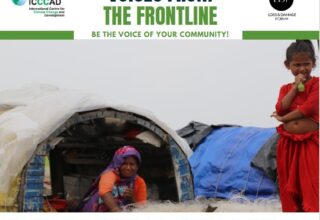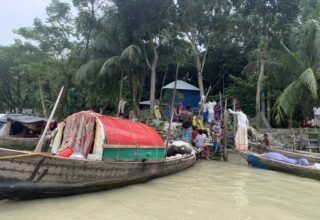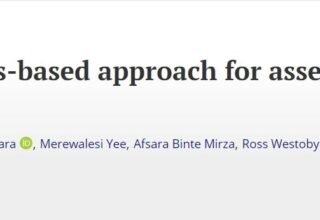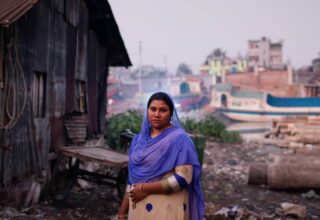Under the UN, reduction of emissions(mitigation) and resilience (adapting to climate change impacts) are often treated as two discrete areas. But as the world is already experiencing the impacts of climate change — such as the recent ‘super cyclone’ and flooding in Bangladesh, or the wildfires in Australia — we are going to have to adapt our infrastructure to be more resilient at the same time as we move to a net zero economy.
Experts have often highlighted that reducing emissions and adapting to climate change impacts are two sides of the same coin. For example, the IPCC report in 2007 included a whole table of examples of linkages — such as where renewable energy supports resilience, as well as sustainable livelihoods or tree-planting supporting resilience while reducing emissions. Yet resilience and emission reduction are also linked at a fundamental, global level.
So how are resilience to physical climate risks (adaptation) and emission reduction (mitigation) linked? This article seeks to answer that question with reference to a framework from disaster management. The prevention, preparedness, response and recovery (PPRR) model is a comprehensive approach to risk management, as shown in the figure below.
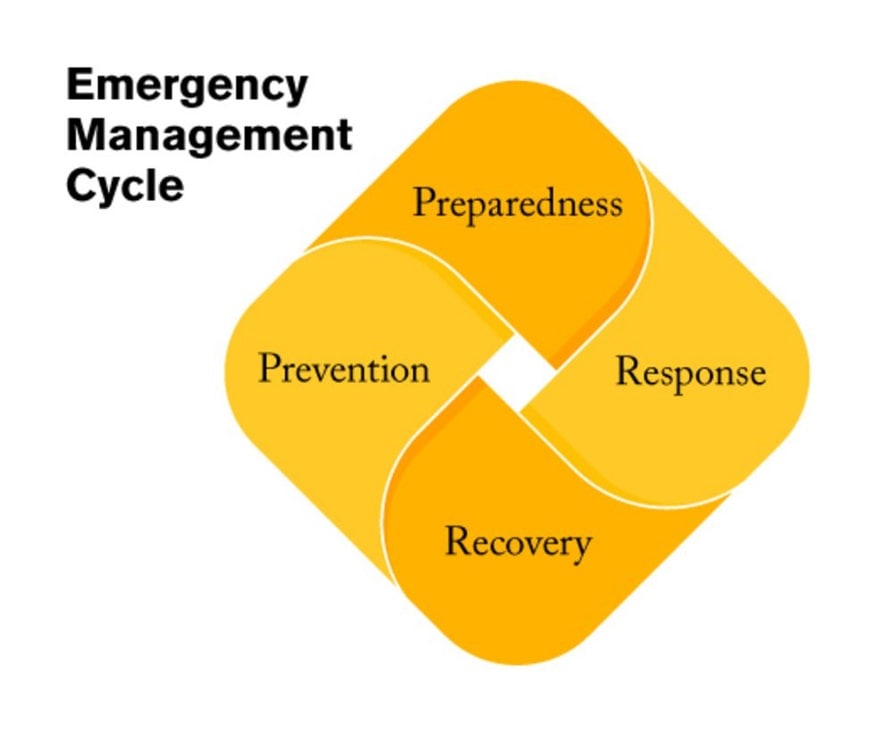
This model has been used by emergency management agencies for decades. Taking this model as an example, we can consider that climate change ‘mitigation’ or reduction of carbon emissions would fall into the same category as ‘prevention’. By reducing emissions in line with the Paris Agreement goals, we prevent the worst impacts of climate change.
This builds on the old adage that ‘prevention is better than cure’. In disaster management, it is well recognised that post-disaster response is much costlier than pre-disaster mitigation and preparedness.
Reducing emissions should be seen as an essential part of the pre-disaster management cycle, including by agencies such as the United Nations Office for Disaster Risk Reduction. Under the UN’s climate body, the UNFCCC, there has long been an artificial distinction between adaptation (resilience) and mitigation (emission reduction) with separate bodies being formed to deal with each issue, and separate definitions for climate finance. Really, both adaptation and mitigation are part of a comprehensive approach to reducing climate risk.
The issue is important because there are limits to how far we can ‘adapt’ to climate change as shown in the IPCC report. Could humanity really adapt to warming of 6 degrees or even 4 degrees Celsius of warming above pre-industrial levels?
Economists such as Nordhaus previously claimed using cost-benefit analysis that it would be cheaper to ‘adapt’ than to reduce emissions. However, such models failed to take into account the presence of tipping points in the climate system or in loss of important ecosystems.
For example, there are biophysical limits to the tolerance of crops, plants or animals to heat stress. According to NASA, there are already marine ‘dead zones’ in the ocean where “the deep water is so low in dissolved oxygen that sea creatures can’t survive”. These ‘dead zones’ are likely to increase in number, the higher the average global temperatures go.
The presence of ‘tipping points’ in the climate system also makes it hard to ‘adapt’ to these changes. For example, Greenland ice sheet disintegration or West Antarctic ice sheet disintegration could occur with relatively low levels of warming (around 1.5C-2C) but could trigger up to 7 metres of sea level rise and 3 metres of sea level rise, respectively, over longer timescales. This level of sea level rise would likely make it extremely difficult for many coastal communities, islands and ecosystems to adapt — and migration would be more likely.
There are implications for the Sendai Framework on Disaster Risk Framework — the global agreement to reduce and prevent disaster risks across the globe. Experts have argued the Sendai framework puts too much focus on the ‘hazard’ part of disaster risk — with less focus on ‘mitigation’ including mitigating of emissions. Yet by referring to the PPRR framework, it is clear that resilience and low-carbon development are linked.
Governments need to both reduce vulnerability, where possible, and also reduce the emissions that prevent climate risks in the first place. Countries cannot hope to just ‘adapt’ — nor can they focus only on emission reduction, given the warming already expected due to current emissions. As Lord Nicholas Stern has said, ‘“We must be very careful to think of development, mitigation and adaptation as together’. It is a logical fallacy to separate them out.
One example of such a contradiction comes from Bangladesh which is a highly vulnerable country to climate change. However, Bangladesh recently had one of the largest pipelines of proposed coal plants. In fact, recent data showed Bangladesh had the sixth largest coal pipeline in the world. If all such coal plants were built, the resulting emissions could threaten Bangladesh’s own people by contributing to global sea level rise. Fortunately, the Government of Bangladesh recently announced it will review these plans as coal is no longer a cheap option.
It will be disastrous, for example, if institutions invest in making fossil fuel infrastructure more ‘resilient’ to climate change. Just recently, there was a major oil spill in Siberia. This was caused by heatwaves and melting permafrost. Climate change risks such as the melting permafrost ironically threaten oil industry infrastructure. However, if the response is to invest in ‘resilient’ fossil fuel infrastructure this will make the problem worse until climate change fundamentally threatens global human security. A shift away from fossil fuels is needed, whether global petro-states will admit it or not.
It appears the PPRR model has not previously been applied to climate change or natural ecosystem risks in a comprehensive way but it can offer some insights. From a conceptual perspective, both emission reduction and climate resilience can actually be seen as part a comprehensive approach to risk management.
Originally this article was published on August 10, 2020 at Medium .
About The Authors
Dr Helena Wright is the Vice President, Sustainable Infrastructure and Energy Finance of the WWF-Singapore. She is also the Global Lead for Infrastructure Finance in the WWF network.
Prof. Saleemul Huq is the director of the International Centre for Climate Change and Development (ICCCAD) at the Independent University, Bangladesh (IUB).
Disclaimer: The views in this article are not attributable to any organisation.

